Roofing Road Trip with Heidi- Phillip Harris - PODCAST TRANSCRIPTION
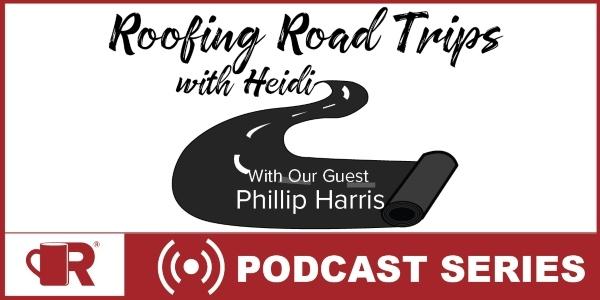
Editor's note: The following is the transcript of an interview with Phillip Harris from Tremco Roofing. You can read the interview below or listen to the podcast here.
Heidi: Hello and welcome to Roofers Coffee Shop Roofing Road Trips with Heidi podcast. I am very excited today to be on this podcast with my friend from Tremco, Phillip Harris. He is in the product manager and in charge of safety for Tremco. And really, when I say, "Safety," the safety equipment, different safety systems that are so important to keep our contractors, our building owners, basically everyone who's up on a roof, safe every day. And so Phillip, thank you so much for joining me today.
Phillip Harris: Thank you, Heidi. I'm so happy to be here.
Heidi: It is. Boy, we've had a lot going on in the world. This is March 18th when we're recording this, but by the time it gets out, I'm sure we're going to have a lot of people very focused on safety and all of the spring roofing that will be going on. So can you kind of tell us a little bit about, first of all, about you and what Tremco's doing with these safety solutions? It's just phenomenal.
Phillip Harris: All right, well, definitely. Yeah, so I have 10 years of commercial sales and product management experience. So prior to being a product manager, I had been in sales for over 11 years, and now, a product manager for about three years. So I kind of bring both sides to the table, as far as with the sales background, and then now, more specialized into a product management role. And as you say it, Heidi, well, one of the products that I manage are safety solutions, and one of the things we are looking to do is, we're just looking to take that same message. Tremco Roofing and Building Maintenance, they see it's the cornerstone of our business. And we focus on, and I know it sounds corny, but we really do focus on leading with safety every day. We have bracelets that our team wears, that they have lead with safety and end with family. And that just goes to speak to our commitment to safety, that stems from the passion to just protect our most valuable assets, which are our teammates, our employees, especially, obviously, what's going on in the country now. I mean, nothing more speaks to it than what, as a company, we've done by shutting down a lot of our offices and sending everybody home to be safe as we get through this crazy time in the country. So right now, I am talking to you from my home office, so again, just kind of going over how we just really value our employees. And we're trying to take that same commitment and focus, and share that now with our contractors and to our building owners, our customers, our partners.
Heidi: I love that. Lead with safety and with family. That's phenomenal. And really, right now, you're right. With everything that's going on with the coronavirus, we have to think family first and we have to think safety. You know what? While we're here just a little bit, why don't you just expand, just a tad, on exactly... I know Tremco is very focused on this, and you said that everyone's working from home right now. What are some of the suggestions that you are hearing for rooftop safety, when it comes to the hygiene and just the social distancing and stuff like that, that's going on right now?
Phillip Harris: Yes, I do. So I don't want to preach myself as an expert whatsoever at all. But just some of the things that we have our team doing is communication, staying connected to your managers, letting them know what projects you're working on, where you're going to be going, how far that travel is to try to cut down on any potential needs for hotel stays. And letting our employees know that they have to wear their gloves at all time while on projects, making sure that they're reaching out to our customers to ensure that we have permission to continue our normal duties of working on the roof and doing projects. So just ensuring that everyone's as safe as possible and we are not putting anyone in a situation where, number one, they're showing up someplace where, at this point in time, they're not allowed to be. Also, making sure that, as they are working, they are remaining safe. So again, that's just some of the biggest things, is just communicating, letting individuals know where you're at and making sure, when you're there, you are working and staying as safe as possible while working. Also too, all of our team has been notified too, as they are working on any project, that they have to keep their mask on at all time, so gloves, mask and just maybe even practicing social distancing, as you say. I think as far away as individuals as possible, up to six feet, though my children do not believe in that, so there is no social distancing taking place inside my household whatsoever at all. Kids, they're on top of me all times of the day, soon as I come up from my office.
Heidi: Oh. You know what? I never could stay away from the kids when they were sick either. So social distancing with families, it's just not a thing, it's just not going to-
Phillip Harris: Yeah, it's not for women.
Heidi: ... happen. I know. But like you said, communication is so important. I want to back up just a second because I find this... I just have such admiration for product management because, really, product management is about listening and it's about really strong communications. So I was wondering if you could maybe help our roofing contractors out there really understand the role of product management within a company like Tremco, and kind of what you do every day to bring such great products to market.
Phillip Harris: Of course, Heidi. So the way I define product management and how we define it as a company is, the individual who identifies the customer's need and the larger business objectives that that product will fulfill. And they basically articulate what success looks like for the product, and then, we rely on the team to turn that vision into a reality. So, like you said, it's really working with our partners, with R & D, with our sales force, to make sure that we're, for lack of better words, that we're not kind of in our basement, thinking up all these ingenious ideas, and then rolling them out and giving the world a solution that no one wants and no one wants to sell. So it's really just making sure that our thoughts line up with that of our sales force, they line up with that of our customer base, to ensure we're supplying something that's needed into the market, that's going to be looked at as a product that the customer wants and needs, I think is the biggest part. Typically, as individuals, just as consumers in general, we tend to buy needs all the time, and even if it's things that we identify as a need. If you look at us, Heidi, and you go back 25 years... I know, speaking for myself, when I was younger, my parents did not think I needed a cell phone. Now, you fast-forward 20 some years and most of us have to turn around our cars if we leave our cell phone at home for just five minutes. That would be my definition. Also, going in more detail, managing the products through their life cycles, setting that long-term vision and strategy, and then again, like you said, communicating with all different groups. And then, really setting that, why, when and what? Why we are looking to roll out this product, when we are going to look to introduce it, and then, what problem is that product going to solve for our customer base?
Heidi: Yeah. I worked a lot, when I was with EagleView, worked a lot in product management with our product... really kind of understanding what kind of technology we needed to bring to market. And one of the things that we always looked at was, sometimes, the market doesn't even know they need it until you actually get there. And I think this is part of what you have been doing and Tremco has been doing with building owners, is that sometimes, they're not even aware they need it, and now, you are bringing this amazing safety solution that's reducing their risk. So can you talk a little bit about how you've been working with building owners and facility managers too, because I think that will help contractors really understand the need?
Phillip Harris: Yes, so what we look to do at Tremco is a consultant-style sale too, for lack of better words, basically saying we look to educate our customers, our building owners, on why this is a need, that we're not, for lack of better words, looking to do a upsell. We're not coming in and talking roofing, and then adding on the safety solutions, almost like when you're going to get a car and then they say, "Oh, well, if you want that, that's the next package." That's not what we're looking to do. We're looking to come out and explain to the customer that, obviously, when we are working on the roof, we are going to set up safety to ensure that our team is safe, our contractors are safe while working on your roof. But you, as a building owner, have the same responsibility for individuals that access your roof once we leave, because as you know, Heidi, contractors typically set up safety but it is not permanent, it's temporary safety. And when the project is complete, they take the safety down and take it with them off to the next project. So it's just explaining to the customer that, with changes in OSHA regulations, that you have a lot more accountability to ensure individuals are safe on your roof. And obviously, the building owners are sending individuals up on their roof to work on different things, who are their employees.
Heidi: Right, right. Or there's just people, tenants, who go up on the rooftop, even if they shouldn't, so having that safety is so important. You just mentioned OSHA. Can you talk a little bit about some of your safety solutions, and how they are helping building owners and roofing contractors, but really, building owners, comply with OSHA regulations?
Phillip Harris: Of course. So Heidi, as you know, all of us in the contractor, construction industry, we all understand 1926 Subpart M for Fall Protection. We've all heard about it. A lot of teams, that's where you hear people say, "Six feet up and then six feet away," meaning, when elevations are six feet plus and then, when you are more than six feet to an unprotected roof edge, you need fall protection, so we all understand that. But the big thing that we are explaining to our building owners is that, underneath 1910.28(b)(13), which is a OSHA regulation, I'm sorry to not put that first, work on low slope roofs, that it is more detailed now with that, when it comes to our building owners, just like it is with construction. So back in 2017, OSHA made those two different subparts of their OSHA regulations more closely match up, so now, the contractor's part of fall protection and the general industry part are very closely linked. So when we talk about that 28, that goes more into the duty of having it and that... So to make it very easy, we can kind of look at it like a red light, yellow light, green line approach, where we're saying, "If you're less than six feet from an unprotected edge, that's a red light. Regardless of what's going on, you need to have fall protection. Individuals need to be protected." If you are at least six feet but less than 15 feet, that's the yellow area. We won't go into too much detail, but basically saying, "The individuals need to be protected with fall protection unless it meets two different stipulations, which is infrequent and temporary." Like I said, we've talked about that, Heidi, on other conversations that we've had. So individuals can go and access that or, obviously, reach out to me if they want more detail into that, but to not go too deep into the weeds. And then, we call it the green light area when they are 15 feet or more from the edge, explaining to customers that that does not mean that you don't need to have fall protection. It just means that you can look at more visual-type protection, like heavy-duty warning light systems and things like that, to warn individuals not to get closer than 15 feet. And then, all of the solutions that we provide at Tremco are all going to meet or exceed OSHA regulations that are typically tied to the criteria they have to meet, which is underneath .29 when we're talking about general industry.
Heidi: And so to me, it seems like with that is some really great... I mean, that's just solid information that roofing contractors can take to building owners, right? It's solving a problem that sometimes, and I know probably a lot of building owners are pretty... understand all of this. But to be that expert to a building owner and to really be able to bring solutions, to me, that seems like... That makes a lot of sense to me. I would say, this is the kind of information that you have, that we have on Roofers Coffee Shop, that we've talked about in past podcasts and webinars. So for roofing contractors, they really should understand all this, to be able to help in their sales and just protection of their building owners and their facilities.
Phillip Harris: Correct, Heidi, and one thing we have really been doing being on our end is reaching out to our contractors to also talk to them about looking to have these safety solutions on hand. So instead of setting up the temporary, especially when we're talking about things like skylights that are considered holes through OSHA, that we have found that... those skylight guards are so easy to install that some of our contractors have started to just purchase those direct from us, and setting them up on the project to the customer as a add-on service they can provide, because it's going to take just as long for them to do that than it is to set up the temporary and then tear it down. So that's also something for our contractors to think about and reach out to us to think about. Some of the times they are setting things up, is it going to save them time and money to set up something that they could just leave there for the customer, that they could add on to the contract? Speaking with the customer, as far as maybe giving them... Obviously, we all like options, to give them the option of, we can install this and leave these items here for you, which will actually help us to get the project done quicker, because at the end, we don't have to then tear them all down.
Heidi: Wow. That is a differentiator, that is really smart. A lot of people that I don't even think, think that way of, let's just do something permanent that really helps in the long-term and helps the building owner instead of a lot... I mean, obviously, like you said, contractors are thinking safety, they're doing temporary solutions, but now, you're offering permanent solutions. It's a win-win across the board. That's really smart. I love that.
Phillip Harris: Yes, and if you think about it, Heidi, a lot of our contractors typically also work... I don't want to say all, but a lot of contractors also work with customers, and set up maintenance programs and things like that. They help extend that... the life of the roof. And when they're doing that, anytime they access the roof, the contractors are going to come and set up their temporary and break it down too, so... And a lot of our conversations with our contractors, it helps with that too, when they're sending out a quick one, two-man team to just go do some patch and repairs. If that's already installed up there, they know, for those customers, that that can be a lot easier time for their team when they're going back out on projects. So just something to keep in mind for all of our contractor base listening to us today.
Heidi: Yeah, I really liked that. And that's a great segment or for us to go into something I also wanted to talk about, and that was service and maintenance and service and maintenance with the ability to bring these kind of safety... As contractors are doing evaluations of roofs for service and maintenance, maybe they don't need a new roof yet or anything. But these kind of safety solutions can definitely be something that sales people are talking about, along with another product line that you are in charge of, and that's the Tremco coatings. Talk to us a little bit about what you're doing on those products, and maybe a little bit about the products and how they kind of are fitting in also, into that service and maintenance sphere.
Phillip Harris: Of course, so yes. So with our line of liquid roof coating membranes, we push, heavily, the message of restoration over replacement, which is restoring a roof that's going to perform just as good as tearing your roof down. So instead of doing a complete replacement, we're going to restore the roof back to a workable service life. And then with that, we have products that can go anywhere from warranties from 10 years up to 30 year warranties, just depending on the product that they choose to use for the restoration. So that's just a big message we preach at Tremco, as far as restoration over replacement, if at all possible.
Heidi: Then, you know what I have loved watching? How coatings have grown in the industry and how Tremco has really brought some game-changing products to the market, is that I think it also really helps with the labor situation. It doesn't take as many people to restore, compared to replace. It also, I think, opens up the types of people who can be on the roof. Are you seeing some of that?
Phillip Harris: Yeah, definitely. So obviously, as we deal with things like the issues in the labor force, we're just not having enough individuals that have that expertise, that... Our liquid-applied products are something that individuals can learn, and they are a lot... It's a lot easier learning curve, let's say. It's not that specialist when you're talking about your old asphaltic built-up roofs and things like that. It gives the contractors a lot less individuals who are needed on a project, and then a easier learning curve for the contractors to be able to put down a top quality product to ensure that their customer is satisfied, and that they'd get that good word-of-mouth. Also too, that can tie into our safety solutions too, to help with the labor shortage. Because, as we know, Heidi, when the weather is beautiful, depending on what part of the country you're in, you have your roofing seasons that are some areas are longer, and then in other areas, are shorter. With this line of safety solutions, unlike a lot of roofing products, there are no weather restrictions. The only thing is, as long as you can safely access the roof and work, then you could look to extend your contractor base by going in your off-roofing season months, installing the safety solutions on projects and with customers. And then also, being then ready to pick up and go on projects as the weather starts to change.
Heidi: Yeah, that makes a lot of sense. I'm just seeing this picture in my mind of this beautiful coated roof with this beautiful... all the safety. You have a list here, guard railings and hatch guards and molded grating walkways. I mean, you really have a full solution in that safety realm. And I know we kind of touched on it earlier, but can you maybe me just go over a little bit of what those products are, how they look up on the roof and what products you're offering?
Phillip Harris: Of course. So as far as the products, you mentioned a lot of them. We have guard railing, and the product that we consider our premium product at Tremco is our Tremco FRP line of rooftop safety solutions. And these products are, for our guard railing, come standard in yellow and in light gray. I would ask for any contractor or customer to reach out to their local Tremco representatives, and they can show a picture of how the light gray really looks like steel. But with those products, they come with advantages over steel, where our FRP does not contain metal, so it's not going to rust out or corrode. They are thermally non-conductive, meaning that when it's a warm, beautiful day outside and you go and touch that railing, or as you're working, maybe you bump into it, it's not going to conduct any heat, so it's going to feel the same in the winter as it does in the summer. These are easy to maintain and clean, so if you are looking to go up and just clean it off, you want your railing... Everybody wants their facilities to look beautiful, and you want the railing to look just like it looked when it was installed one, two, three, five, 10 years ago. It's just something as simple as just a easy wipe down, either with solvent or just with soap and water. And with that, we are also having a warranty that we are putting on that line of products that mirrors our roofing warranties, where we are warranting that material with a industry-leading, 20-year material warranty.
Heidi: Oh, wow. That's impressive. I love what you're talking about, that what it's made of... It looks like steel, it gives that aesthetic look, but it's not, and so you're not going to have your hands burned. How many times has that happened when you're up on a-
Phillip Harris: Once.
Heidi: ... roof, with all the heat of the coatings reflecting and everything else?
Phillip Harris: Yes. And then, to go into some of your other questions, I am sorry I didn't address them all, when you were talking about the product. So we touched base on guard railing, and that's what, typically, everybody thinks about when you think of rooftop safety. But the biggest thing to keep in mind in the area we always want to explain for customers to address, is your access points. If you think about those access points, your ladders, your hatches, those are the areas that individuals have to go through and use twice as much because, obviously... they enter the roof through them and they also exit the roof through them. And typically, a lot of times, that's multiple times, depending on what the individual is doing, depending on how they're getting whatever material they're bringing up to the roof, up to the roof. So those are the areas we love to educate customers because they don't think about the unprotected edges first. Think about your access points first. Protect individuals when they are making that transition up and down from the roof. And we have ladders for that, we have hatch guards to protect the hatches because, as we all know, if you leave a hatch open, it's considered a hole. And typically, most individuals that access a roof through a hatch, leave it open because they do not want to be stuck on the roof, so you leave-
Heidi: [crosstalk 00:23:21].
Phillip Harris: ... that open. And then, the next thing to address, that we love to educate on, is what we call holes and openings, which... Again, a hatch is not just a access point, but it's also a hole. And then, skylights. I mean, as we look and we want more light in the buildings, there are a lot of skylights on facilities. And those skylights are holes and need be protected, because as we all know, if that skylight breaks down over time due to UV degradation, it becomes less and less stable. And I don't know about you, Heidi, but typically, most skylights I see on roofs are not the newest and prettiest skylights. Let's just say that. So we do have, again, like I said, the skylight guards. And then, to go into what we would consider some additional products, we already touched base on guard railing, we have a DynaWeight system, we like to call it our fall protection system, that replaces that of a typical anchor point that requires structural engineering and other plans to consider, as far as the lifeline, the area fall, and swing radius and things like that. With this system, you could place it onto your roof, and it acts as a anchor point, and you're using it for restraint so individuals can connect to it and work safely from it. Restraint just means that the system is not going to allow you to... not allow you to fall. So you're going to ensure that your cable that you're attaching to is not going to let you to get over the roof edge, meaning to get to the roof edge from any different area, you have to get down to your knees and reach out to walk on the edge. So that's another system we have. And then, I believe you touched base on our molded grating walkways, which that's not... That does not fall into fall protection, but it does fall into safety when it comes to slips, trips and falls because the top of it has a aggregate surface, so you got your non-skid surface. So a lot of our contractors are used to, when we're talking about modified bitumen, to have the granulated cap sheet that helps with that, or we're talking about our liquid-applied products. Typically, individuals will look in certain areas to broadcast granules into them, to give it that non-slip feel. We have a walkway that you can lay out. They come in three by two and four by eight, four by 12, five by 10, so they can come sized to be able to have any type of the space you need to create a safe walkway. And the unique thing about these are, these are FRP-based walkways too, so they're going to perform for 10, 15, 20 plus years, with very low maintenance. And they are also set up and connected with rubber feet and rubber connectors, which takes them about a half inch off your working surface, meaning that your roof can continue to drain just like it has. And then also, you're not going to have all of that debris and dirt, because it has a 70% open area, so your roof will not just collect dirt and dust. We have all seen the typical asphalted or single ply walkways, and those are areas that are always dirty, all around the walkway. Also, to hold and contain water, dirt and debris. That can, obviously, over the long span of your roof, start to cause issues.
Heidi: Yeah, I know. I've seen that. To have something that, not only is safe to walk on, but then also, to help keep that clean, that's great.
Phillip Harris: Yeah, yeah. Thank you.
Heidi: Well, so for the contractors who are out there, and I love how you said, "I always like to give... This is what you need to do, so talk to your local Tremco sales rep." But you had some tips. You had about three tips of things that they should really be looking at as a focus for safety, and especially, focus for safety for their customers in 2020. Can you share those?
Phillip Harris: Yes, so when we're talking about just the focus, and something that our contractors can do is... I know we talked about reaching out to our sales team. Our sales force has access to a team of what we call, our Safety Solutions Representatives or SSR, a team of certified safety professionals who are available nationwide. I believe, Heidi, correct me if I'm wrong, but our good friend, [Shari 00:27:58] and you did a podcast, maybe a month or two ago that really touched base and focused in on that safety solutions team. So that team is available to go out and evaluate rooftops for safety hazards. Then they can put together a report of compliant solutions for the rooftop hazards, and then they obviously have access to a full line of our safety products. So what they can do is mark out a plan for the customers that the contractor can show to their customer, that basically has... He marks out an approach that we could work with over a span of one, two, three years, to get them to be fully compliant, where we look at those main areas, those most hazardous areas, and then step back until we get all the way to the non-most critical areas, we like to call them, where we focus on the most critical and then break it down, following the customer's budget, so they could get there in a time that their budget allows. And a big thing to keep in mind for our contractors when talking to customers is, if ever one of our customers unfortunately has an issue with OSHA or has a visit, a very big thing to show is a plan to be fully compliant. So maybe they're not there yet, but they can show that they are working with you and with Tremco to get fully compliant, and they just set up a plan to get there over the span of the next two, three, four, five years.
Heidi: Yeah, that's great because then that, like you said, that's something that can be shown, can be in the records, can really show the commitment of the building owner and the contractors to make things right. Phillip, one of the things I'm kind of thinking about, especially with where we're at right now, where maybe salespeople, maybe contractors, can't get those one-on-one meetings with building owners right now or facility managers. But really, by using this SSR team and some of the aerial imagery that we know is out there from our good friends at Nearmap and EagleView, you could actually start doing some evaluations of rooftops and have things ready to share with building owners about safety.
Phillip Harris: Correct, yes. They can reach out to their Tremco sales rep right now. Or wherever we're at, with currently what's going on in our country, they can reach out to their Tremco rep, who can work with their local SSR, who can, yes, use all those different programs to put together a view of the roof and put together a, what we would call, a budgetary plan, showing the customer the most critical areas that they have identified. Yes, just from using the technology that we have available to us today, with the contractor simply providing us with an address and a rough location that they are looking to have us put together that first budgetary proposal. Or not even a proposal, it could just be a evaluation, just kind of going over, these are what we would consider some of the most critical areas, by looking at areas on the roof that have serviceable units and then, items that we believe individuals would be working on over time. And then, obviously, looking at holes, openings and access points, so yes.
Heidi: That's great. I think, as we really look at safety and the commitment that... your own personal commitment and the commitment of Tremco, it really shows, as always, the huge professionalism of the roofing industry in finding solutions and protecting lives.
Phillip Harris: Yes, thank you. And then, one thing, Heidi. I wanted to add and make sure I got in this for our contractors. Again, I'm not exactly sure when this is going to play, as Heidi spoke with... Currently, March 18th. There's a lot of things currently going on in our country, with the coronavirus that we have. We've had plans for certified installation programs, that our contractors can go to a training class. So they can become Tremco FRP-certified contractors for installing all rooftop solutions, meaning that when they're showing up and they are talking with their customers, they can let them know that they are certified to install these safety solutions. So not only can they be roofing experts, but now also, safety solutions experts. So again, more teaming in with Tremco to open up larger and... not larger, but even more opportunities, I should say, for them and their companies.
Heidi: That's excellent, wow. The more training like that, more certifications, the better because I... Really, we keep getting this feedback from the building owner, industry, facility management, all of those, that they really... This is top priority for them. In safety certification, high quality is key, so being... That's great that Tremco's offering that to contractors to be able to take it to the next level. Well, you know what, Phillip? We are at the end of our 30 minutes, or a little bit over-
Phillip Harris: No.
Heidi: ... but I-
Phillip Harris: No.
Heidi: I know. But it's been so interesting. I love these kind of initiatives. I love what you are doing for the industry, bringing this, developing products that not only perform, that really save lives. So thank you for everything you're doing, and thank you for being on this podcast today.
Phillip Harris: Thank you, Heidi, for having me. It was fun. I would love to come back anytime.
Heidi: Well, you know I'll be asking you, so that will be great. We will have a follow-up after all this current craziness is over. And I would like to thank everybody who's listening today. Thank you so much for being here on this podcast. Be sure to listen to all the Roofing Road Trip podcasts with Heidi, and on our RLW, Read, Listen, Watch section of rooferscoffeeshop.com. Have a great day and stay safe.


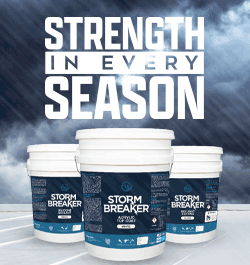
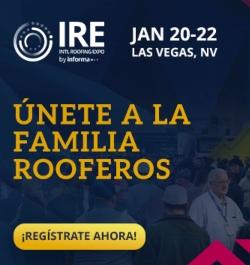









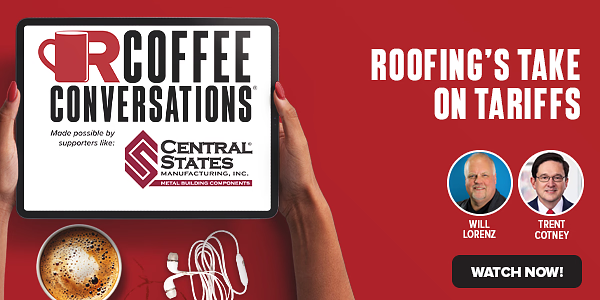
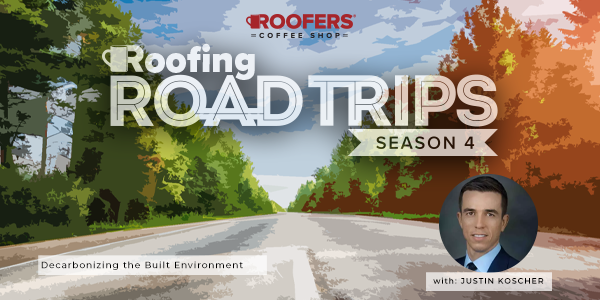
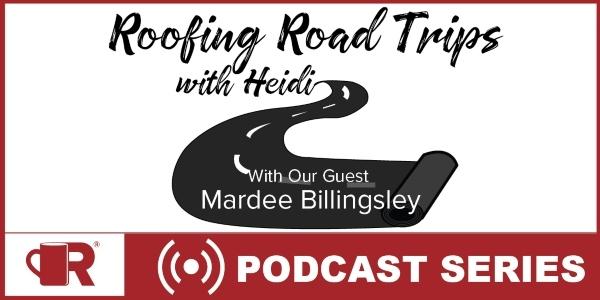





Comments
Leave a Reply
Have an account? Login to leave a comment!
Sign In